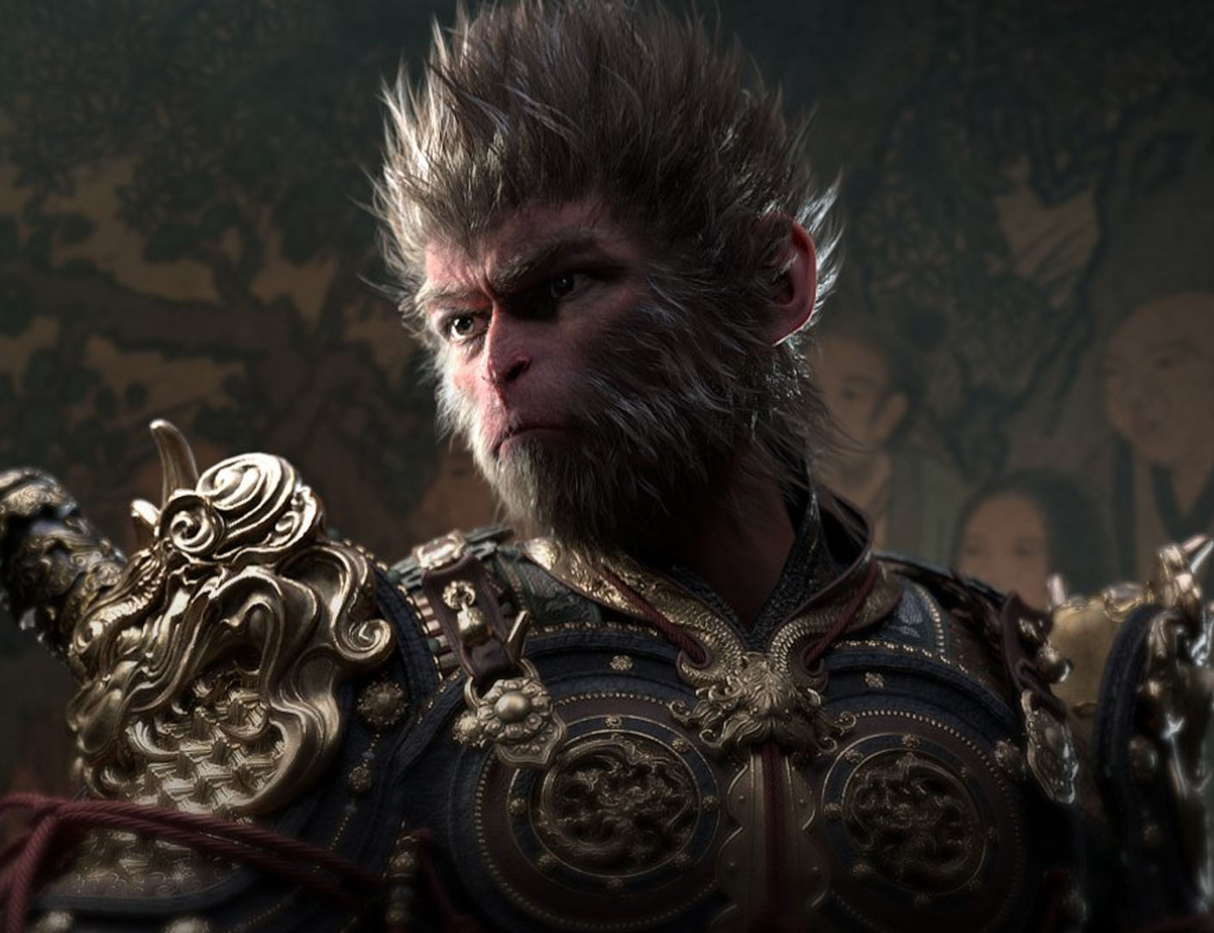Black Myth: Wukong surprised me. Going in, I knew not to expect a souls-like, despite it seemingly sharing many of the genre’s hallmarks. The game’s Chinese developer, Game Science, has been adamant that it’s not a souls-like, preferring to define it more generically as an action-RPG. This is at least partially accurate, as Black Myth: Wukong is definitely not a souls-like. What I wasn’t expecting was for it to be essentially a lengthy boss rush. It’s not uncommon to go from one boss fight into another and then another, and it’s in these elaborate battles where Black Myth: Wukong shines. The moments in between, however, aren’t quite as strong, sometimes devolving into aimless tedium. But its satisfying combat and unique variety of boss fights mostly manages to overcome these flaws.
Black Myth: Wukong’s story is based on the classic Chinese novel Journey to the West. Originally published in the 16th century during the Ming dynasty, the epic saga has proven to be incredibly long-lasting and influential since its release, inspiring everything from Ninja Theory’s Enslaved: Odyssey to the West to Akira Toriyama’s Dragon Ball manga. Black Myth: Wukong’s take on the enduring tale is set sometime after the original story while still retaining many of its characters. Names like Zhu Bajie, Kang Jinlong, and the Bull Demon King will be instantly recognizable to anyone familiar with Journey to the West, even if certain characters’ allegiances sometimes differ from the source material.
You play as a mute monkey, known as the Destined One, who shares more than a few similarities with the titular Sun Wukong–a legendary simian commonly known as the Monkey King. Sun Wukong is a prominent character in Journey to the West, so your unexpected presence is one of the game’s central mysteries. Are you the Monkey King reincarnated, or perhaps one of his clones breaking off on your own quest? The answer isn’t the most surprising, but it makes for a thrilling conclusion to the adventure.
The rest of the game’s story didn’t quite resonate with me, however. It’s clear that Game Science had the freedom to deviate from the source material, but I still felt lost when trying to follow every facet of Black Myth: Wukong’s narrative. It helps that each of the game’s six chapters revolves around a relatively self-contained tale, dealing with universal human emotions such as love, hate, and greed. Yet it still feels like a story best experienced by those with intimate knowledge of the source material. References and concepts from Journey to the West and other Chinese mythology frequently flew over my head, so I found it difficult to invest in both the broader picture and its more intimate yarns. It’s a shame, because finally seeing a Chinese take on a Chinese story as classic as this one is inherently fascinating. A lot of people have only experienced the story through the lens of another country’s adaptation, and it’s clearly been treated here with a lot of care and attention to detail. There are moments I love–like every encounter you have with a headless monk who serenades you with a Sanxian–and the character designs are universally fantastic, but the story is hard to latch onto if you’re unfamiliar with Journey to the West or Chinese folklore and mythology in general.
Fortunately, one of Black Myth: Wukong’s greatest strengths is how it weaves Sun Wukong’s wonderous abilities into the framework of its fast-paced combat. The Monkey King is known for wielding Ruyi Jingu Bang, a magical staff that can shrink and extend at will. He can also create clones of himself from a single strand of hair, freeze enemies in place with a point from his finger, and shapeshift into a vast array of different forms. All of these abilities are represented in the game, expertly showcasing the Monkey King’s prodigious combat capabilities. By executing combos with the staff, you’ll see it elongate to bludgeon enemies with extra ferocity before reverting back to its original size. You can also make use of various spells that consume mana and operate on cooldowns. These include the ability to generate clones of yourself to give enemies more than a single target to focus on, and the use of a magic spell called Immobilize that lets you freeze your foes in place for a few seconds, giving you time to wail on them while they’re helplessly trapped or using the opportunity to take a step back and heal.
Shapeshifting is a significant part of your arsenal, too, as you’re able to transform into specific previously defeated enemies and utilize their different movesets and weapons. One of these transformations is called Red Tides, which you acquire early on after defeating the giant wolf Guangzhi. By shapeshifting into this ferocious canine, you’re able to wield his flaming glaive to inflict burn damage on your opponents as you twirl around and pull off a variety of combos. What’s more, each transformation has its own health bar, essentially providing you with an extra life. Once this health bar is extinguished or you’ve used up all of your Might by performing various attacks, you transform back into your usual self.
While shapeshifting and using quick-use spells to freeze enemies and overwhelm them with clones is rewarding, the core of Black Myth: Wukong’s combat lies in its unusual combo system
While shapeshifting and using quick-use spells to freeze enemies and overwhelm them with clones is rewarding, the core of Black Myth: Wukong’s combat lies in its unusual combo system. Light attacks are essentially a means to build Focus points, which are spent to unleash different heavy attacks. With enough upgrades, you can eventually bank up to three of these points at a time, and the game’s entire combat economy is built on farming Focus and cashing it in as soon as possible to deal significant damage. Light attacks do feel fairly weightless as a result, which is further emphasized by the small amount of damage they chip off each boss’s health bar. The game’s sense of impact comes from executing a full combo, especially if you’re able to transition from a light combo into a heavy finisher. In these moments, your staff begins to glow red-hot as it hurtles through the air and collides with an almighty thump. These attacks deal a ton of damage and regularly stagger enemies in satisfying fashion. Finding openings and using Immobilize to give yourself time to pull off these combos is the basis of Black Myth: Wukong’s combat. Once you’re able to keep a combo going while mixing in dodges and utilizing your bag of tricks, each boss fight becomes a frenetic and exhilarating dance to the death.
As an elaborate boss rush, Black Myth: Wukong lives and dies on the quality of its boss battles, and for the most part, they’re excellent. Each of the game’s six chapters offers a rogue’s gallery of thrilling foes to fight. Known as Yaoguai, these mythological beasts range from a giant black bear to a traditional Chinese dragon, a blood-spattered tiger, and many, many more in between. Blocking is not part of your extensive repertoire, and the only form of parrying is limited to a magic spell on a cooldown timer, so you need to excel at dodging to make it through each fight alive. This might sound intimidating if you don’t usually play tough action-RPGs, but outside of a couple of boss fights in later chapters, the game isn’t particularly challenging. This is coming from a souls-like veteran, so my gauge on what’s hard might be slightly skewed, but I defeated a number of the game’s bosses on my very first attempt. I still wouldn’t say Black Myth: Wukong is approachable, however, as its toughest bosses still pose a considerable threat, and there aren’t any difficulty options. The ramp-up to its most challenging moments is just more forgiving.
Whether you’re fighting on a frozen lake surrounded by snow-capped mountains or sloshing through a shallow pool of blood, these battles against the Yaoguai are frequent triumphs. There’s a sense of balletic elegance to its best boss fights, mixing martial arts influences with supernatural flair to create these tense and awe-inspiring encounters. You’re often challenged to learn attack patterns to nail the timing on dodges and figure out where openings occur so you can get a combo in. But there are also opportunities to be strategic with your abilities, too. Immobilize is ineffective against certain bosses, so you might go for a different spell, or vary your transformations to attack an enemy’s elemental weakness. Even if I sometimes found bosses relatively easy, that didn’t take away from their thrills, while the toughest among them were often met with a pounding heart and palpable elation when I finally managed to emerge victorious.
The game’s ability to produce this sensation is where Black Myth: Wukong feels most like a souls-like. There are more obvious similarities, such as a checkpoint system that respawns enemies when you rest, and a flask for healing that has a finite number of charges and can be refilled at said checkpoints. Yet aside from this, Game Science wasn’t lying when it said it wasn’t making a souls-like. This is none more obvious than in the game’s level design. For the most part, your path through each chapter is linear, albeit with a couple of forks in the road leading to optional bosses and crafting materials used for brewing potions and forging armor. Occasionally it opens up with more-expansive areas featuring numerous branching paths, but progression is still usually confined to a singular route, so linearity is present even when it doesn’t initially appear to be. This isn’t inherently bad, but the level design is straightforward and unimaginative–issues that are further compounded by an abundance of jarring invisible walls and a jump that’s functionally useless for most of the game. Throw in only a smattering of enemies that don’t pose much of a threat, and the sections between boss fights feel disappointingly sparse and languid.
I also need to mention a moment near the end of the game that stumped me for several hours because the solution is incredibly specific but not at all obvious, especially when there’s nothing else like it in the game. This sapped the momentum from the final chapter and had me questioning whether I had encountered a game-breaking bug or was just being ignorant.

Each environment you explore does at least look fantastic. Whether you’re running through a bamboo forest grove punctuated by falling leaves and dense vegetation, entering a spider-infested estate illuminated by the faint glow of moonlight, or planting your feet on the sun-kissed rocks of a craggy canyon, Black Myth: Wukong is frequently beautiful. It ran exceptionally well for me on PC, too, compiling shaders at the outset to prevent the dreaded Unreal Engine 5 stutter.
Black Myth: Wukong is an uneven game where the highlights often outnumber the lowlights. Its triumphant boss battles and fast-paced combat make up for the stale moments in between, where bland level design and a scarcity of enemies will have you clamoring for the next face-off with a deadly Yaoguai. I appreciate that it’s not just another souls-like in what is now a crowded genre, and the choice to go for a boss gauntlet is unexpected and, honestly, quite refreshing. It’s disappointing that it falters outside of its cinematic clashes against mighty beasts, but designing this many rousing boss battles while avoiding a sense of fatigue is no mean feat and deserves praise.






